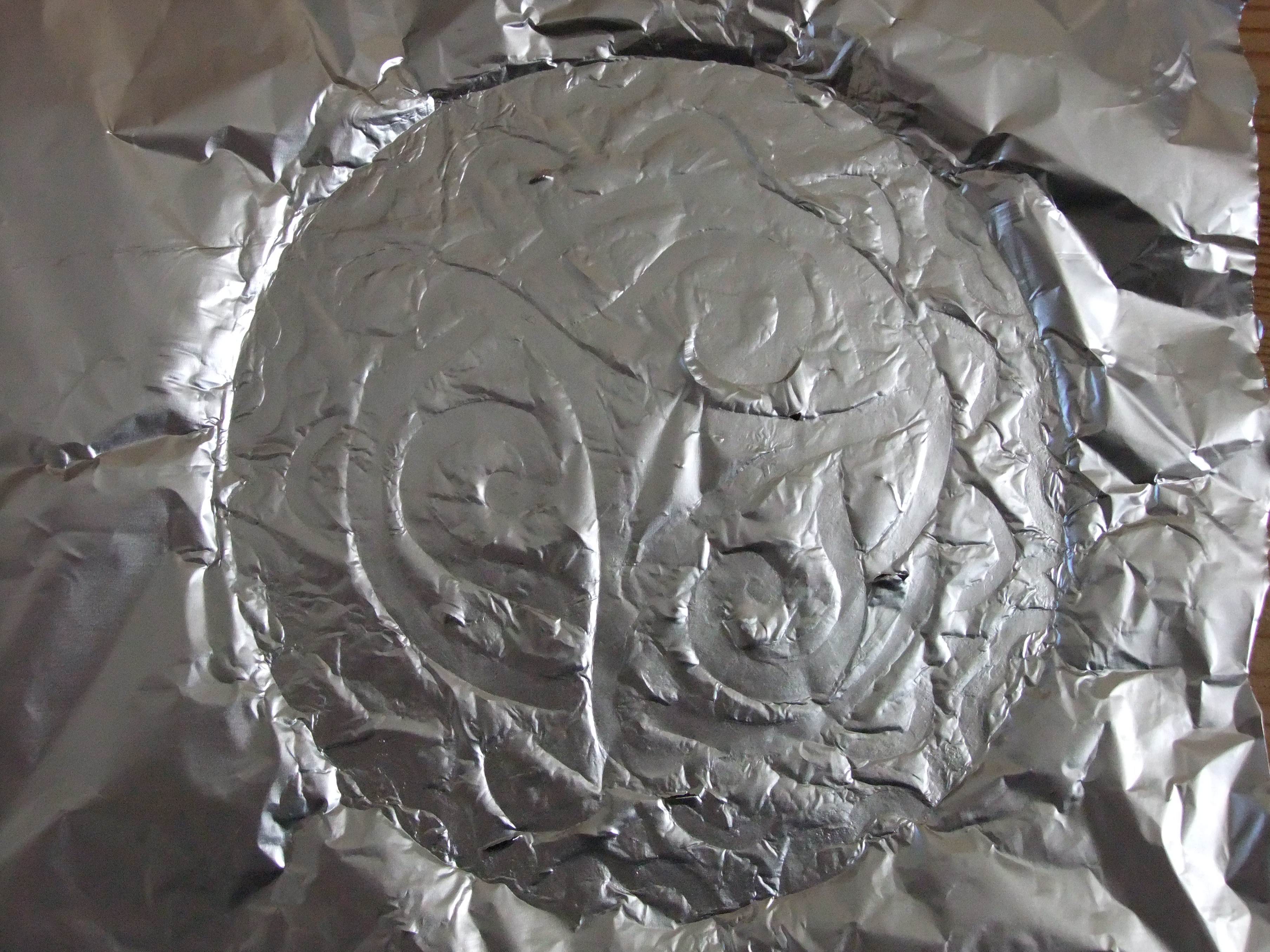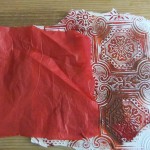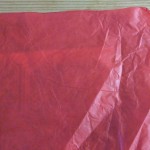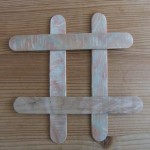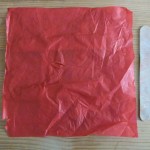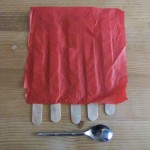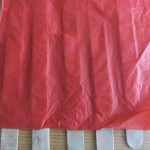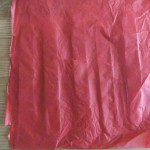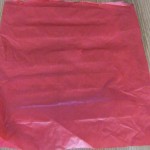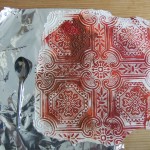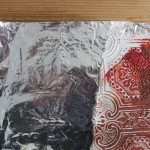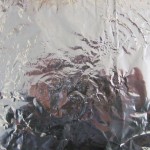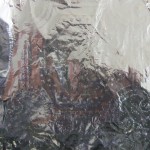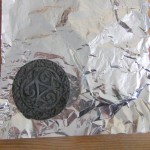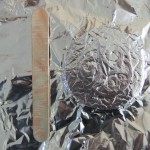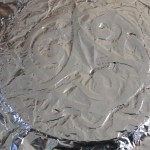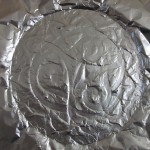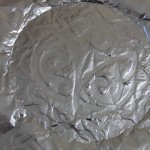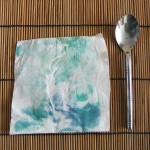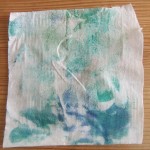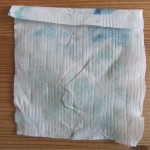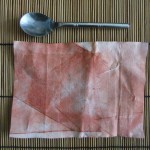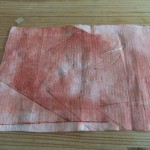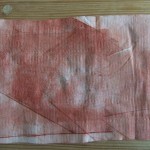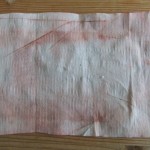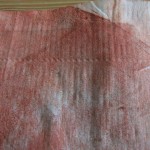Introduction
This exercises introduces the idea of using embossing techniques to create texture.
i) Tissue paper on anaglypta with lollipop stick and spoon
- Project 4: Exercise 2 – Embossing 01
- Project 4: Exercise 2 – Embossing 02
- Project 4: Exercise 2 – Embossing 03
Here I used a piece of printed anaglypta under thin tissue paper and embossed with a lollipop stick then a spoon.
ii) Tissue paper over lollipop sticks with spoon
- Project 4: Exercise 2 – Embossing 04
- Project 4: Exercise 2 – Embossing 05
As the anaglypta was not particularly successful I repeated this exercise using a more defined object, a latticed arrangement of lollipop sticks.
- Project 4: Exercise 2 – Embossing 06
- Project 4: Exercise 2 – Embossing 07
- Project 4: Exercise 2 – Embossing 08
- Project 4: Exercise 2 – Embossing 09
Followed by a further exercise with a flatter arrangement inspired by fence panels.
ii) Aluminium foil on anaglypta with spoon
To establish whether the tissue paper was the reason the anaglypta produced no discernible imprint, I next tried with aluminium foil using the flat of a metal spoon.
- Project 4: Exercise 2 – Embossing 10
- Project 4: Exercise 2 – Embossing 11
- Project 4: Exercise 2 – Embossing 12
- Project 4: Exercise 2 – Embossing 13
iii) Aluminium foil over a coaster with lollipop stick
As the aluminium foil proved marginally more successful than the anaglypta, I selected a coaster with a much more defined surface pattern, a coaster with a celtic pattern.
- Project 4: Exercise 2 – Embossing 14
- Project 4: Exercise 2 – Embossing 15
- Project 4: Exercise 2 – Embossing 16
- Project 4: Exercise 2 – Embossing 17
- Project 4: Exercise 2 – Embossing 18
- Project 4: Exercise 2 – Embossing 19
iv) Dry baby wipe over bamboo mat with spoon
I had some gelli-plate printed baby wipes that I had been experimenting with and these were soft and pliable but dry. I laid one on top of a bamboo placemat and used the back of a spoon to imprint an embossed pattern.
- Project 4: Exercise 2 – Embossing 20
- Project 4: Exercise 2 – Embossing 21
- Project 4: Exercise 2 – Embossing 22
- Project 4: Exercise 2 – Embossing 23
And with a different print using the same technique
- Project 4: Exercise 2 – Embossing 24
- Project 4: Exercise 2 – Embossing 25
- Project 4: Exercise 2 – Embossing 26
- Project 4: Exercise 2 – Embossing 26
- Project 4: Exercise 2 – Embossing 27
- Project 4: Exercise 2 – Embossing 28
Thoughts and conclusions
As can been seen from image 03 the tissue paper was not successful! The anaglypta did not have a sufficiently raised surface and softened when pressed. Using a spoon simply crushed the surface of the anaglypta without really affecting the tissue paper at all. Changing the ‘mould’ for a harder, more raised surface had little effect with the lattice although a pale imprint was achieved with the ‘fence panels’. I feel that the tissue paper was too soft to hold the embossed creases. It might have been possible to press harder but the paper began to tear as the pressure increased.
The anaglypta had a faint impression on the foil but its tendency to flatten when pressed made this only a very soft imprint. The coaster was much more successful, helped by the depth of the surface pattern of the coaster, the hardness of the material and the ability of the foil to shape to the surface and retail the imprint. It was nonetheless quite delicate so would tear quite easily.
The baby wipes on the bamboo mat gave subtle imprints that could be useful and could be stitched into quite successfully as they are surprisingly sturdy. They are stretchy, however, so care is needed to make sure the imprint remains crisp. The reverse was interesting, as was the difference the printing made to the visibility of the embossing. The blue samples (20-23) were clearer on the reverse whereas the terracotta prints (24-28) were clearer on the front.
Future ideas
I had anticipated that this exercise would produce more dramatic results, however, I felt that there were some interesting examples and ideas that could be developed further. A slightly thicker foil such as that used for free embroidery might be better and it may be worth investigating an embossing tool for more delicate, accurate work. Using an embossing tool as a drawing tool rather than to ‘trace’ around a shape would also be worth exploring further.
